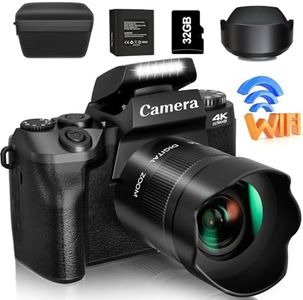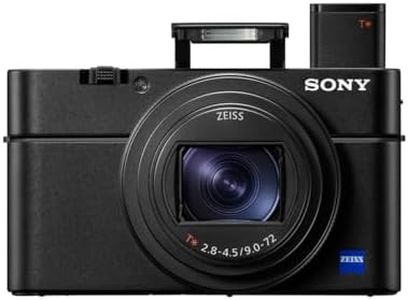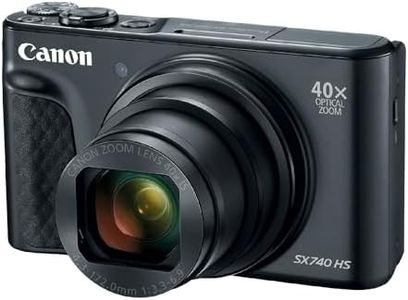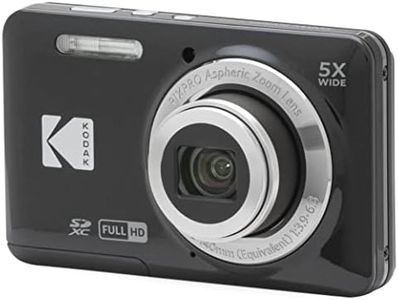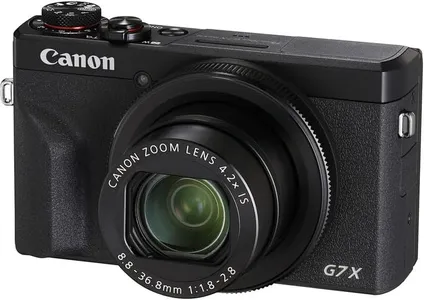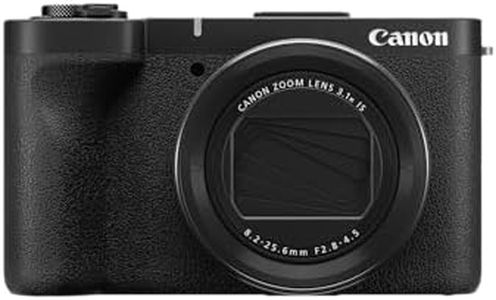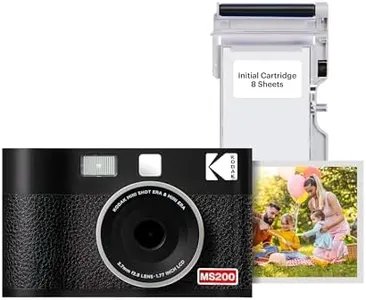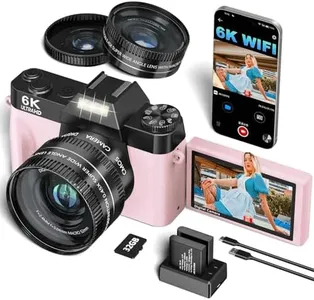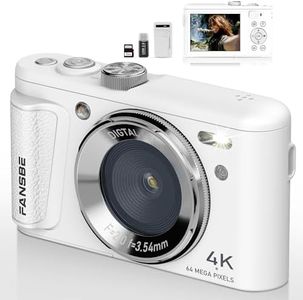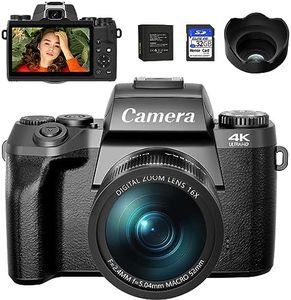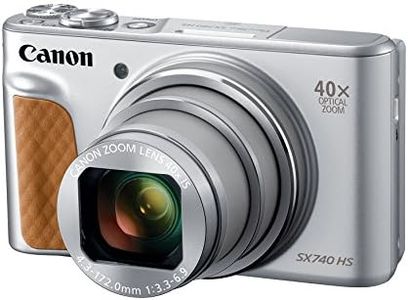10 Best Point and Shoot Cameras 2025 in the United States
Our technology thoroughly searches through the online shopping world, reviewing hundreds of sites. We then process and analyze this information, updating in real-time to bring you the latest top-rated products. This way, you always get the best and most current options available.

Our Top Picks
Winner
Sony RX100 VII Premium Compact Camera with 1.0-type stacked CMOS sensor (DSCRX100M7)
Most important from
633 reviews
The Sony RX100 VII is a powerful point-and-shoot camera ideal for both amateur and professional photographers. With its 20.1 MP 1.0-type stacked CMOS sensor, it delivers high-quality images and supports RAW file formats. The Zeiss Vario-Sonnar T 24-200mm lens offers a versatile zoom range, making it suitable for a variety of shooting scenarios, from wide-angle landscapes to detailed telephoto shots. The fast 0.02-second autofocus with 357 phase detection points and 425 contrast detection points ensures sharp images, even in fast-paced environments.
Additionally, the camera supports up to 20 fps continuous shooting without blackout, which is excellent for capturing action shots. For video enthusiasts, the 4K recording capability with active mode image stabilization ensures smooth and high-resolution videos, and the inclusion of a microphone jack is a plus for audio quality. The camera also features AI-based real-time tracking and eye autofocus for both humans and animals, enhancing focus accuracy in both stills and movies.
On the downside, the camera's battery life is relatively short at 1240 mAh, which may require carrying extra batteries for extended use. The compact size and weight (275 grams) are convenient for portability, but the small form factor may result in a less comfortable grip for extended shooting sessions. Connectivity options like Bluetooth and Wi-Fi are included for easy file transfer and remote control, though the single USB 2.0 port may be limiting for some users. The performance and versatility of the Sony RX100 VII make it a strong contender in the point-and-shoot camera category.
Most important from
633 reviews
Canon Powershot SX740 HS Digital Camera (Black)
Most important from
204 reviews
The Canon PowerShot SX740 HS is a point-and-shoot camera that offers substantial features in a compact package. With its 20.3 megapixel CMOS sensor, it provides high-resolution images suitable for both everyday photography and more detailed captures. The standout feature is the powerful 40x optical zoom, which is ideal for capturing distant subjects without losing image quality. It also incorporates optical image stabilization, ensuring that your photos and videos remain sharp, even when using the zoom function at its maximum range.
The camera supports 4K video recording, allowing for high-quality video capture, and the 4K time-lapse movie feature adds creative versatility for users who enjoy video projects. The 3-inch LCD screen, which tilts 180 degrees, is useful for selfies and vlogging. Built-in Wi-Fi and Bluetooth enhance the connectivity options, making it easy to transfer photos and videos to other devices or share them on social media. The DIGIC 8 image processor supports high-speed continuous shooting at up to 10 frames per second, which is great for capturing fast-moving subjects.
However, the camera does have some limitations. The battery life may not be sufficient for extended shooting sessions, so carrying a spare battery could be necessary. Additionally, while the camera is packed with features, it lacks advanced manual controls that more experienced photographers might miss. The lack of an audio recording feature in video mode could be a drawback for vloggers or those looking to capture high-quality sound with their videos. The camera's size and weight are relatively compact, making it convenient for travel and everyday use. Despite its few shortcomings, the Canon PowerShot SX740 HS is a solid choice for those seeking a versatile and powerful point-and-shoot camera with excellent zoom capabilities and good image quality.
Most important from
204 reviews
KODAK PIXPRO FZ55-BK 16MP CMOS Sensor Digital Camera 5X Optical Zoom 28mm Wide Angle 1080P Full HD Video 2.7" LCD Vlogging Camera (Black)
Most important from
5335 reviews
The Kodak PIXPRO FZ55 is a compact and lightweight point-and-shoot camera designed for casual photographers or beginners. It features a 1/2.3-inch 16MP CMOS sensor, which is standard in this category, offering decent image quality for everyday snapshots. The 5x optical zoom with a 28mm wide-angle lens is versatile enough for general photography, allowing you to capture both landscapes and moderate close-ups without losing much detail. The maximum aperture ranges from f/3.9 to f/6.3, which is typical for similar cameras but means it might struggle a bit in low-light situations compared to models with brighter lenses.
It uses digital image stabilization to reduce blur from shaky hands, though this is generally less effective than optical stabilization found in higher-end cameras. Autofocus relies on contrast detection with a single point, which works fine for steady subjects but may be slower or less accurate in tricky lighting or fast action. The 2.7-inch LCD screen is fixed and not touch-enabled, so navigating menus and framing shots is straightforward but less flexible than some competitors that offer larger or touchscreen displays. Video recording supports full HD 1080p, which is great for casual vlogging or family videos, though it lacks 4K support.
Wireless connectivity options are limited, so transferring photos might require a USB cable rather than wireless sharing. With a very light weight of just 0.23 pounds, it's easy to carry around for everyday use. Battery life is reasonable for casual shoots but expect to recharge fairly often if shooting lots of video. This camera is suited for those seeking an affordable, simple-to-use device with solid photo and video capabilities for casual use, but it may not meet the needs of users looking for advanced features, faster autofocus, or superior low-light performance.
Most important from
5335 reviews
Buying Guide for the Best Point and Shoot Cameras
When choosing a point-and-shoot camera, it's important to keep in mind why you're interested in this kind of camera—simplicity, portability, and decent photo quality without the fuss of interchangeable lenses or complex manual controls. Focus on what you'll use the camera for: casual family snapshots, travel documentation, social events, or maybe some creative photography in your spare time. The best fit is one that matches your usage style, fits comfortably in your hand or pocket, and has features you'll actually use, making your photography experience enjoyable and hassle-free.FAQ
Most Popular Categories Right Now
